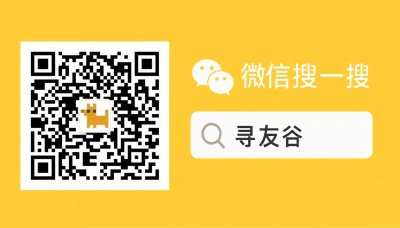Why US students and travelers ask: can I sign up for WeChat without a phone number?
Arriving in China or living here as a student is like stepping into a different rhythm — subway apps, food delivery, campus groups, and 90% of local organizing lives in WeChat. For many United States students the first barrier is simple: the app ties you to a phone number. Maybe you don’t have a Chinese SIM yet, you’re preserving a US number, or you prefer to avoid linking personal numbers to social accounts. That’s why “sign up for WeChat without phone number” is a common query on campus and in dorm chats.
You’re not being weird — you’re being practical. Short-term students, exchange visitors, researchers, or anyone juggling multiple numbers want to know alternatives. In this guide I’ll walk through what really works, what’s risky, and step-by-step tricks people actually use in the real world (no fluff). We’ll also link this to broader tools rolling out for foreigners in China — like the new SinoGuide app that aims to make life integration easier for non-Chinese residents — so you get the full picture of how WeChat fits into the ecosystem today [Source, 2025-11-13].
What’s possible, what’s blocked, and what’s changing
In plain terms: WeChat historically required a phone number for registration. Over the years, Tencent introduced some flexibility — QQ integration, friend-invite registrations, and device-verification paths — but the phone number remains the easiest and most stable route. People have tried several workarounds: international numbers, virtual VoIP services, friend verification, or signing up on other platforms and linking accounts.
Why this matters right now: China is gradually adding more digital services aimed at foreigners (see SinoGuide’s launch to help foreigners with navigation, translation, and services), which signals official interest in smoothing life for non-natives — but that doesn’t mean WeChat will suddenly drop number requirements across the board [Source, 2025-11-13]. Meanwhile, global chat apps are shifting to username-based contact methods: WhatsApp and other apps have announced username features to avoid mandatory phone-based discovery, and the trend matters because it pressures platforms like WeChat and Line to be more flexible. Still: platform policy and verification systems differ — don’t assume parity between apps.
Practical reality: If you’re a US student, these are the common, feasible options I see used on the ground:
- Register with your US number (works fine if you keep the SIM or can access SMS/voice).
- Use a friend’s invite (WeChat allows a limited number of friend-verifications to register accounts without immediate SMS).
- Link via QQ or other Tencent services if you already have them.
- Use a local SIM (recommended if you’re staying long-term — best UX and service access).
- Avoid dubious “virtual number” services that can block or later lock your account.
The social and compliance angle: Apps and services in China increasingly link to government-facing identity and service systems for access to local services. Meanwhile, tools for foreigners like SinoGuide aim to remove friction in day-to-day life (translation, navigation, public service info), but they do not replace WeChat for chat and local group access [Source, 2025-11-13].
Techniques people actually use (step-by-step, with pros and cons)
Here are the concrete methods — tested in dorms, study groups, and expat meetups. I’m honest about reliability so you can choose what fits your risk tolerance.
- Register with your US phone number (recommended)
- Steps:
- Install WeChat on your phone.
- Choose “Sign Up” → select country = United States → enter your US +1 number.
- Receive SMS code and verify. If SMS fails, choose voice call.
- Complete profile, add friends.
- Pros: Stable, supported, lowest risk of later account lock.
- Cons: Requires access to SMS or voice call to the US number (roaming or eSIM helps).
- Friend verification (invite assisted registration)
- Steps:
- Ask a WeChat friend (local or long-time WeChat user) to use the “Mobile Contacts” or “Friend Verification” feature.
- The friend opens WeChat → Contacts → Invite → follow the “Friend helps register” flow (varies by version).
- You receive an on-screen confirmation/QR or a voiced code during the process.
- Pros: Useful when you don’t have SMS access; often the way students without local SIMs get started.
- Cons: Limits: friend invites may be rate-limited; WeChat updates may close loopholes.
- Register via QQ or other Tencent account
- Steps:
- If you already have QQ, open WeChat and choose QQ account binding/registration path.
- Follow prompts to link or migrate.
- Pros: Works for people already in Tencent ecosystem.
- Cons: Not universally available; more friction for new users.
- Local Chinese SIM (best long-term)
- Steps:
- Buy a prepaid SIM at major telco outlets (China Mobile, China Unicom, China Telecom) or airport counters.
- Register the SIM with passport (required).
- Use the new number to sign up, or switch numbers in your WeChat settings later.
- Pros: Best UX for payments, verification, rides, campus services.
- Cons: Requires physical presence and registration; some campuses require additional documentation for long-term SIMs.
- VoIP / virtual numbers — proceed with caution
- Steps:
- Some users try virtual phone number providers to receive SMS.
- Use the provider’s number to attempt WeChat registration.
- Pros: Appears fast.
- Cons: High risk: WeChat and other platforms frequently block known virtual number ranges; later security checks may lock or ban accounts. Not recommended for anything serious (banking, payments, job contacts).
- Use WeChat web / linked device later
- Once you have any WeChat account, set up multi-device login and backup:
- Link your computer and tablet via QR code.
- Enable backup of chat history to local device.
- This matters for students who swap phones or use library computers.
How broader services for foreigners change the landscape
China’s push to make life easier for foreigners with apps like SinoGuide is a sign that authorities and private companies want to lower everyday friction — navigation, translation, and basic administrative services are being centralized for non-Chinese residents [Source, 2025-11-13]. That’s good news for students who struggle to adapt to local apps. But note two things:
- These new services complement WeChat; they’re not a replacement for WeChat’s social and payment layers.
- Official tools may make it easier to get a local SIM or to verify identity for services, which indirectly helps you set up WeChat properly.
Outside China, the chat-app world is trending toward username-based contacts (WhatsApp and Line updates show that contact discovery without phone numbers is feasible). That trend could push WeChat to evolve, but for now WeChat’s ecosystem and local integration strongly favor phone-linked identities — especially for features like WeChat Pay, campus verification, or public service accounts.
🙋 Frequently Asked Questions (FAQ)
Q1: Can I create a WeChat account on iPhone without a phone number?
A1: Technically possible via friend verification or linking an existing Tencent account, but here’s a reliable step plan:
- Try friend verification first:
- Get a trusted friend who already uses WeChat to initiate the “Friend helps register” flow.
- Complete the prompts on your phone when they confirm.
- If that fails, do one of the following:
- Use your US number + SMS/voice verification.
- Buy a local prepaid SIM and register it (required at telco outlet with passport).
- Pro tip: Keep at least one linked phone number in Settings → Account Security so you can recover the account later.
Q2: Can I use a virtual/temporary phone number or online SMS service to sign up?
A2: Not recommended. If you still want to try, follow this safer roadmap:
- Choose a well-reviewed virtual number provider that explicitly supports two-factor services (but expect blocks).
- Use the number to receive SMS or voice call verification.
- Immediately link a stable phone number (US or local) and bind an email if offered.
- Monitor the account for verification prompts; if asked to re-verify, you may lose access.
- Official guidance: avoid virtual numbers for accounts you plan to use for payments or official verification.
Q3: I don’t want to link my personal phone for privacy. What’s best for short-term students?
A3: Options and steps:
- Get a temporary local SIM and keep it active only while you’re in China (register with passport).
- Use a secondary phone or eSIM dedicated to campus life.
- Use WeChat’s privacy settings: limit Moments visibility, turn off people-nearby, and avoid binding payment features if privacy is your priority.
- Steps to minimize footprint:
- Sign up with local SIM or US number dedicated for this purpose.
- In WeChat → Me → Settings → Privacy: adjust who can find you and see your posts.
- Don’t bind bank cards unless needed; for small payments use campus or canteen top-ups.
🧩 Conclusion
If you’re a United States student in China and your goal is to sign up for WeChat without using your main personal phone number, your best play is practical and simple: either register with a secondary (US or local) number or use a trusted friend to verify your account. Avoid risky virtual-number shortcuts for accounts you’ll rely on for campus life, job networking, or payments. Platforms and official services for foreigners (like SinoGuide) are improving access, but they don’t replace WeChat’s central role on campus and in daily life [Source, 2025-11-13].
Quick checklist:
- If staying >1 month: get a local SIM and register with passport.
- Short stay or privacy concerns: use a secondary number or eSIM.
- No number? Try friend verification but have a fallback (US number or SIM).
- Never rely on sketchy virtual SMS services for important accounts.
📣 How to Join the Group
If you want real-time help, join XunYouGu’s WeChat community. We’re a friendly mix of US students, expats, and people who’ve been through the onboarding hassles.
- On WeChat, search for the official account: xunyougu (add as official account).
- Follow the public account, then send a message: “Join student group” and the assistant will invite you.
- Or add our community assistant WeChat ID (search “xunyougu-help”) and request an invite — we’ll guide you through signup tips and troubleshooting.
📚 Further Reading
🔸 SinoGuide App Helps Foreigners Easily Integrate into Life in China
🗞️ Source: itbiznews – 📅 2025-11-13
🔗 Read Full Article
🔸 Your All-in-One Life Assistant for Foreigners in China Is Here! SinoGuide App Officially Launched
🗞️ Source: itbiznews / PR Newswire – 📅 2025-11-13
🔗 Read Full Article
🔸 UAE travel and education boom: International student numbers surge
🗞️ Source: Travel and Tour World – 📅 2025-11-13
🔗 Read Full Article
📌 Disclaimer
This article is based on public information, compiled and refined with the help of an AI assistant. It does not constitute legal, investment, immigration, or study-abroad advice. Please refer to official channels for final confirmation. If any inappropriate content was generated, it’s entirely the AI’s fault 😅 — please contact me for corrections.

